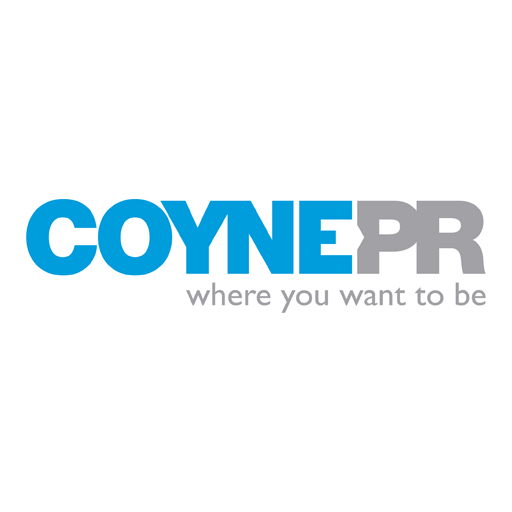Coyne PR 16 Nov 2015 // 7:11PM GMT

Imagine a patient with a chronic condition fills a prescription and, upon receiving the pill bottle, records the Rx number into his or her mobile device of choice. For patients like this, their calendars now auto-populate with alerts that will remind them to take the medication on the exact days and timeframe as directed by the prescribing physician. In addition, the plan provider and physician are notified that the Rx has been calendared, which triggers an on-going series of personalized information and motivational messaging to support the patient journey, while providing the patient with the opportunity for feedback, questions or real-time access to a pharmacist.
This may sound a bit futuristic, but it’s these types of “moments of intent” or “moments of need” that companies like Starbucks and Amazon are honing in on with the use of big data in the consumer space. And they’re using this incredibly robust data in two valuable ways: to better understand the consumer decision-making journey in an effort to deliver impactful messages at “moments of intent,” and to give their customer service representatives the relevant information they need to build strong relationships during “moments of need.” By accessing their digital services, they can tap into years of your data – not just addresses and payment information, but what you’ve bought, looked at and pages you’ve jumped to. By aggregating this data, they can send personalized messages that help guide your decision-making process. On service calls, they provide their representatives with the pertinent information needed to solve your problem, not ask extraneous questions that have nothing to do with it. Simply put, they are building relationships.
So when talking about the health care industry’s access to massive amounts of data – which will only get bigger with time – and being able to harness it in meaningful and interactive ways across multiple communication tools and technologies, it’s easy to see how messaging during important decision-making moments of intent could help deliver what everyone wants – better outcomes for patients, while lowering overall health care costs.
To be sure, this is already happening in pockets throughout the industry as companies, leveraging many sources, crunch data to create solutions designed to drive healthier behaviors – be it medication adherence, proactive screenings or lifestyle changes. But are we truly harnessing big data to engage, personalize and create interactions that will sustain that behavioral change? It’s time to take a page out of our consumer-product friends’ playbook and move from teachable moments to moments of intent.
The data is there and health care organizations worldwide are investing in the sophisticated platforms that are necessary to cull this information into streamlined, personal and relevant content that drives interaction, as well as action that leads to better health decisions. However, most health care companies will admit they are still in the early stages of combining data with analytics to effectively improve quality of care and affordability. Combine that with navigating a complex regulatory environment, compliance and data governance issues, and it’s easy to see what a huge undertaking reaching patients in the moment becomes. As health care companies continue to advance down this path, here are a few key items for consideration:
- Executive Buy-In Throughout the Organization. Commitment to transforming your business to be able to provide real-time, patient-specific information at a moment of intent requires alignment throughout an organization, including IT, finance, marketing, product/service and operations. A cross-functional team should be created to influence resources and support, while allocating appropriate budgets for success. Most important, the chief information officer and chief marketing officer must be in lockstep on this moment’s mission.
- Metrics – A Holistic Approach. Moments are an interconnected continuum of context, channels and devices. People want to be able to access anything from anywhere. Take a holistic approach to the broad set of physical and digital effectiveness to capture relevant experiences that are grounded in moments. Use real-time feedback to continuously optimize effectiveness of these moments, which may be an app enhancement or relevancy to patient.
- The Perfect Partner. The “we know our members best” mentality needs to be checked at the door. A vast majority of companies are works in progress when it comes to mobile capabilities. Selecting the right partner that can demonstrate an expertise in developing analytical capabilities for learning about your members’ behaviors, as well as provide tools and solutions to deliver powerful and cross-channel experiences, will be more effective and efficient in helping get you moments-ready.
But at the end of the day, it is all about translating big data into stronger, smarter and more actionable connections between healthcare providers and patients. Equally important is unlocking the data and communicating it in the most effective way. For data to have its strongest impact, it needs to be two-way dialogue communicated through the right channels to the right audiences at the moment of intent.
Companies that truly embrace patients on this data-driven journey will reap the rewards and make great strides toward the ultimate goal – greater engagement, better health outcomes and lower costs.
 Ann Smith is Vice President, Healthcare Practice, at Coyne PR
Ann Smith is Vice President, Healthcare Practice, at Coyne PR
Special acknowledgment to Inderpal Bhandari, Senior Vice President and Chief Data Officer at Cambia Health Solutions, Inc. for assistance in developing this article.


































.jpg)














